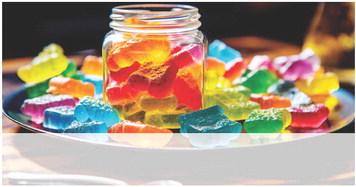LAST NOVEMBER, OHIO VOTERS GAVE THEIR STAMP OF APPROVAL TO ISSUE 2, legalizing the use of recreational marijuana in the state of Ohio for adults age 21 and over. Whatever position one might have held on this ballot initiative prior to election day, it’s important to keep in mind that it’s passage may have unintended health and safety consequences for children and teens. It’s up to parents and caregivers who choose to use cannabis to be aware of—and take steps to mitigate—those risks.
Here are just some of the ways kids can be exposed to the dangers of cannabis, either directly or indirectly:
Prenatal cannabis exposure Just as no amount of alcohol is safe to consume while pregnant, no amount of cannabis use during pregnancy has been proven safe. In fact, the Substance Abuse and Mental Health Services Administration (SAMHSA) identifies several potential problems that cannabis use during pregnancy can cause. They include fetal growth restriction; a greater risk of stillbirth; preterm birth; low birth weight; and long-term brain development issues affecting memory, learning, and behavior (source: samhsa.gov).
Ingestion of cannabis edibles Cannabis edibles come in a wide variety of forms—candies, chips, baked goods, desserts, sweetened beverages, and other sweet or savory treats—that can be enticing to kids because they closely resemble popular snack foods in their shape, color, and packaging.
What’s worrisome is that edibles can contain levels of THC (tetrahydrocannabinol, the psychoactive constituent of cannabis) that are dangerous or even deadly to children.
For example, according to poison. org, the website of the National Capital Poison Center, “…a small, one-ounce bag of THC-infused Doritos-inspired nacho cheese chips contains 600 mg [of] THC, a dose that is poisonous for both children and adults when an entire bag is consumed.”
If you have cannabis edibles in your home and children are present, it’s crucial to treat these products as you would any medication. Store them in child-resistant containers well out of reach, ideally in a locked cabinet. Also, avoid consuming cannabis edibles in front of children so they aren’t tempted by the sight of them.
If you suspect a child has ingested a cannabis edible, call the poison control hotline at 1-800-222-1222 for guidance. If your child is exhibiting severe symptoms, call 911 or go to the nearest emergency room immediately.
Riding in a vehicle with a cannabis-impaired driver
Of course, kids don’t necessarily have to consume cannabis themselves in order to fall victim to its intoxicating effects. For instance, riding in a vehicle with a driver whose judgment, reaction time, and coordination have been impaired by cannabis use can put them at risk of serious injury or death due to collision.
A responsible adult would never drive after consuming an intoxicating amount of alcohol, and the same logic should be applied to getting behind the wheel while under the influence of cannabis—especially with children in the back seat.
Assuming “If it’s ok for adults, it must be ok for me” Legalization and the observation of adults using cannabis products can create the impression in kids’ and teens’ minds that this drug is harmless. However, it’s important to understand that the growth and development of the human brain continues until approximately age 25, and the effects of cannabis on young people can differ substantially from its effects on adults.
According to the website healthychildren.org (a resource of the American Academy of Pediatrics, AAP), studies have shown that cannabis use in adolescence and early adulthood can cause a variety of cognitive and physical challenges, including difficulty thinking and problem solving, problems with memory and learning, poor physical coordination and reaction time, and difficulty focusing and maintaining attention. As a result, their academic performance and college prospects can suffer and they are placed at greater risk of serious accidental injury in many circumstances of everyday life.
Also according to healthychildren.org, “Though we need more research to understand exactly why, cannabis use has been associated with depression and anxiety in teens. Cannabis has also been identified as a possible trigger for the psychosis—or bipolar disorder. There is evidence that young people who use cannabis face higher risks for suicidal thinking and actions.”
Given the broad range of risks cannabis use presents to young people, the AAP firmly believes that people under the age of 21 should avoid using all forms of cannabis. Parents and other caregivers should adopt the same stance and take whatever steps they can to ensure the young people in their lives are kept safe from this drug. ✲


